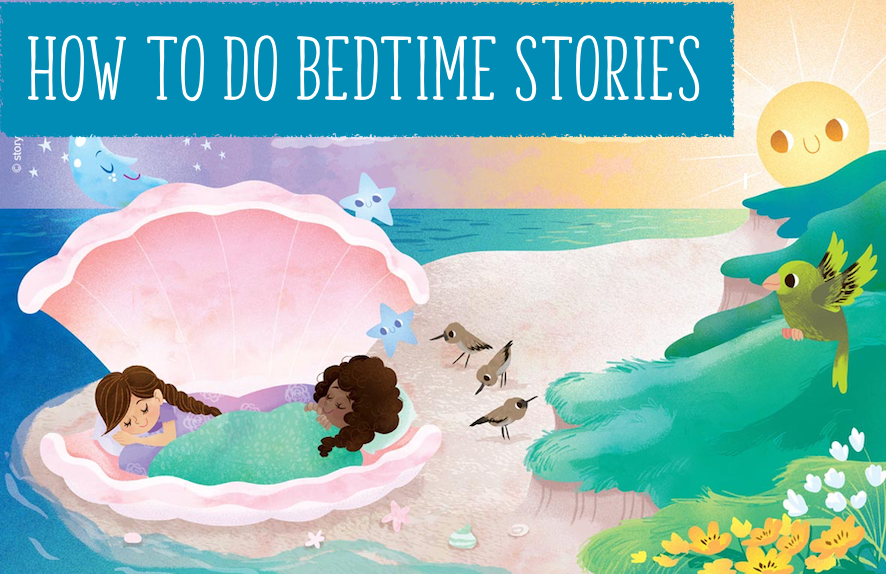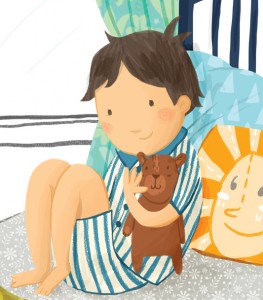 Anyone who follows Storytime will know that our magazine is built on a deep love of bedtime stories. If there’s one thing our whole team treasures, it’s the memory of bedtime stories as a child. Back then, bedtime stories were a pleasant indulgence – a bit of together time at the end of a busy day. But now, there’s compelling evidence that bedtime stories are hugely beneficial to your children on many levels (see below). But how to do bedtime stories like a pro?
Anyone who follows Storytime will know that our magazine is built on a deep love of bedtime stories. If there’s one thing our whole team treasures, it’s the memory of bedtime stories as a child. Back then, bedtime stories were a pleasant indulgence – a bit of together time at the end of a busy day. But now, there’s compelling evidence that bedtime stories are hugely beneficial to your children on many levels (see below). But how to do bedtime stories like a pro?
You’ll be surprised by how often we get asked for advice by our readers and parents who are unsure about how to do bedtime stories successfully. Read on for our advice on the when, why, what and how of bedtime stories.
1. When Should I Start Reading Bedtime Stories To My Child?
Truthfully, it’s never too early to start reading to your child. In fact, the sooner the better. It’s thought that reading to your child from an early age can help them to develop sound recognition, which in turn helps to boost language skills and broaden your child’s vocabulary. And the earlier you start doing it, the more likely it is your child will think of reading as a positive and enjoyable experience. Plus, reading bedtime stories is a great way to bond with your baby.
If your baby is sitting on your lap, begin with board, fabric and sturdy picture books with bold, high-contrast images, mirrors and textures. Newborns will appreciate being close to you and hearing your voice; by six months, they’re a bit more interactive and can make out the shapes, colours and faces in books; by 12 months, they’re touching books, putting them in their mouths and following your finger as you point out pictures.
If you’re reading to a newborn or a baby in a cot (i.e. a baby that won’t grab and tear), you can pretty much read anything you think is appropriate, even bits of your favourite books from childhood. Just hearing you read bedtime stories is a positive thing.
2. When Is The Best Time To Read Bedtime Stories?
We’ve talked before about the importance of timing when it comes to reading bedtime stories, but the best guide of all is your own child. If they’re exhausted after bath-time and can barely keep their eyes open once they’re in pyjamas, it’s not wise to keep them awake any longer with a bedtime story.
Remember: one of the key benefits of a bedtime story (apart from sharing quality time together and all the developmental bonuses it brings) is to ease your child into a relaxed and happy state before drifting off to sleep. You need to share bedtime stories when your child is receptive enough to enjoy them. That could be before bath-time, before pyjamas, after pyjamas, in your special ‘story chair’ or tucked up in bed – only you can truly judge it. And, if you’re not sure, the best advice is to keep trying until you find a time that works for everyone. The main thing is that you commit to doing that.
3. How Many Bedtime Stories Should I Read?
This largely depends on the age of your children – and experts often look at the length of time you read, rather than the number of books. In the UK, the reading charity Booktrust recommends that you aim for 10 minutes of reading every day. In the USA, it’s a minimum of 15 minutes. We say, aim for 10 minutes when your children are very little and gradually increase the time as they get older, aiming for 20 to 30 minutes.
This could equate to one picture book or short story initially, increasing to two or three when they’re a bit older, or a chapter of a book for older children (two or three chapters if it’s an early reader book with lots of pictures). As your children get older, be sure to bring forward your bedtime story slot, so you can fit it in. And keep an eye on the time – it’s easy to keep going or re-reading the same book over and over again when you’re both loving it. It’s great to do this every now and again, but not if it leads to kids associating bedtime stories with sleep deprivation. If you’re really having fun, slot in extra reading sessions earlier in the day or at the weekend. You don’t have to make bedtime stories a mammoth reading session.
4. How Do I Read Bedtime Stories?
With enthusiasm, with pleasure and, most importantly, with everything that makes you who you are. The key to how to do bedtime stories is to be yourself, even if that means stumbling and tripping over words and avoiding silly voices. You’re not a Hollywood actor; you’re a parent. Read our 5 top tips for reading stories for more advice.
5. What Are The Best Bedtime Stories?
In an ideal world, the best bedtime stories are the ones you both enjoy, but you’ll inevitably find that your child falls in love with a book or story you can’t stand. The best advice here is to grin and bear it – and try to see it from your child’s point of view. Try to understand what it is about the story they love so much. If you can work it out, you might eventually be able to lead them to another similar book or story that doesn’t drive you quite as mad.
The best bedtime stories for children tend to have the following themes:
-
- They’re funny or downright silly.
- They feature fears, problems or subjects children can relate to, such as being scared of monsters under the bed, learning to share, being brave, being naughty, starting school, or even disliking vegetables.
- They star favourite characters, like pirates, dinosaurs and animals.
- They allow kids to explore imaginary places or other worlds, such as outer space or under the sea.
They’re tried and trusted classics, like fairy tales.
That’s not a comprehensive list, by any means, but it’s a good starting point if you’re stuck and looking for good bedtime stories. You can get recommendations for specific titles over at LoveReading4Kids, sorted by age group.
In Storytime, we try to have several of the above in every issue, of course!
6. What Age Should I Stop Reading Bedtime Stories?

You’re never too old for bedtime stories. Cupid and Psyche artwork for Storytime Issue 17 by Myrtille.
We once attended a talk with children’s author Frank Cottrell Boyce, who claimed that he was still reading stories to his teenage son. That just about sums it up. There’s no cut-off point for reading to your child. No damage can be done by reading to them after a certain age, though there is evidence that stopping too early might have an adverse effect on children’s literacy levels.
As long as your child enjoys it, there’s no reason to stop, and the longer you carry on reading bedtime stories, the more reading tips and strategies they’ll pick up from you. By doing nothing more than reading, you’re teaching them about tone, expression, creating tension, pronunciation, and sharing new words. They’re learning without trying. As they become more competent readers, you can even alternate reading chapters to each other. And, as they get older still, you can introduce them to more challenging texts to really stretch them. What’s more, you can use your bedtime stories as a springboard for all kinds of discussions or activities beyond the book or story. Read for as long as you can and enjoy it.
7. Why Are Bedtime Stories Important?
Bedtime stories are crucial for all of the reasons listed above, but we’ll give you a quick summary of their key benefits. Here are 12 reasons why bedtime stories are important:
- They give you a uniquely special ‘together time’ as a family.
- They leave your children with happy childhood memories.
- They help develop early language skills.
- They boost vocabulary at all age levels.
- They improve literacy rates in children.
- They help kids fall in love with reading – something that lasts a lifetime.
- They expand minds and horizons, and explore difference.
- They promote imaginative thinking and creativity.
- They teach children positive values.
- They give children characters or situations they can relate to and learn from.
- They foster a greater understanding of the world and other people’s needs.
- They bring happiness and laughter.
We’re sure you can think of many more reasons to add to this list.
We hope we’ve answered your questions and have given you a thorough guide to how to do bedtime stories. There are few things in the world that give so many positive benefits, but take so little effort and are so enjoyable to do.
If you’re tackling bedtime stories for the first time, we’d love to hear how you’re getting on – and if you have any more questions, let us know and we can try to share more tips here. Share them with us on Twitter or Facebook – always happy to hear from you!
Best of luck with the bedtime routine!





